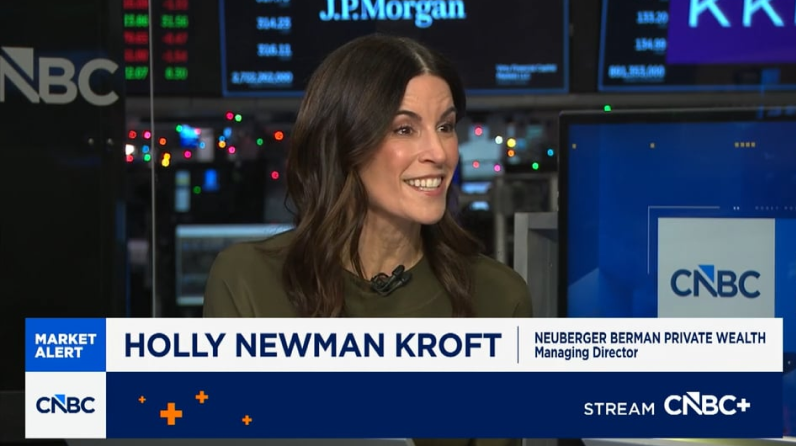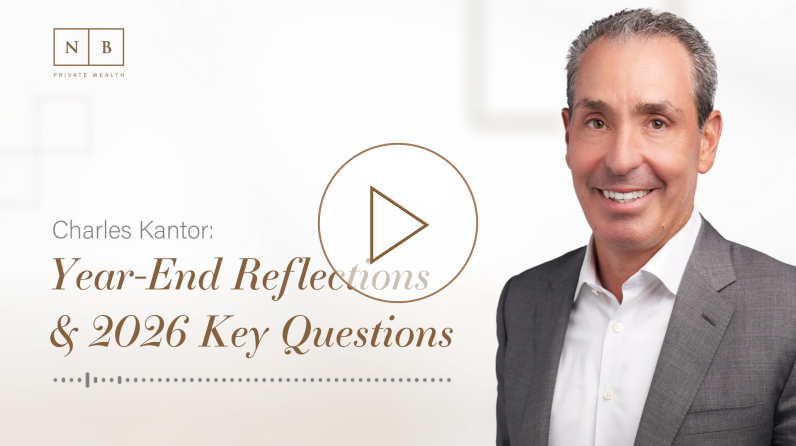

Investing with an environmental, social and governance lens can uncover opportunity and, where desired, align your portfolio with personal values.
A complex transition is underway that will create new winners and losers among businesses, sectors and regions. New attention is being paid to how companies are managing material environmental, social and governance (ESG) factors. And we are seeing growing interest in “sustainable” and “impact” investment strategies among increasingly influential investment cohorts, including women and younger investors, as noted in our recent Thematic Currents series.
Multiple Lenses
It’s useful to understand the lexicon of this investment segment. Our ESG philosophy distinguishes between process-focused investing—otherwise known as “ESG integration”—and outcome-focused investing, which includes “sustainability,” “impact” and “exclusion-based” strategies.
Integration simply means that, when analyzing a particular company, financially material ESG factors are considered alongside many other traditional financial metrics. For instance, if a major automotive company chooses to develop electric vehicles and is also entering into major labor contract negotiations, research analysts may examine—among other factors—the viability of that EV strategy (an environmental, or “E” factor), as well as how the company’s labor relations stack up against its competitors (a social, or “S” factor).
Sustainable and impact investing, by contrast, take a more outcome-focused approach. A sustainable investment strategy targets high-quality companies with sustainable business models and leading performance on material environmental and social factors, while an impact strategy may seek to generate positive (and measurable) social and environmental effects, as well as a market-rate financial return. Finally, an exclusion-based strategy means avoiding investment in companies that do material harm to the environment or society.
These nuances can lead to different investment decisions by portfolio managers. For example, while a traditional automaker with a promising new EV line might appear attractive for an ESG-integrated portfolio, a standalone EV manufacturer might be a better fit for a sustainable or impact portfolio in which the environmental outcomes carry greater weight.
Doing the Work
Consistent with our active approach, we believe that asset managers should not simply rely on the assessments of third-party ESG data ratings—there is just too much nuanced information that may fall through the cracks. Instead, while it is important to access a range of external and internal data, we believe it is crucial to then fill in the gaps and inform that data with qualitative judgment. Our team has developed a range of forward-looking tools to quantify and assess company performance on material ESG factors, which can then be employed by our portfolio managers in making investment choices:
- Industry Materiality Matrix. Particular ESG factors may have varied impacts across industries and sectors. For example, retailers may have significant exposure to social issues given their personnel-heavy profile while mining companies may have more exposure to environmental issues. This matrix quantifies these differences with input from our research analysts.
- NB ESG Quotient. Based on our materiality matrix, we assign ratings to individual securities throughout the financial markets—roughly 4,000+ stock ratings and 2,760 credit ratings as of year-end 2023.
- Net-Zero Alignment Indicator. A key issue for many investors is whether companies are exposed to climate transition risk, and what plans companies may have to manage that risk. This indicator draws on both third-party data and qualitative inputs from our research analysts to capture alignment.
The Role of Engagement
We firmly believe that creating a dialogue with companies on financially material ESG topics should be integral to the investment process. This means having ongoing interaction with companies to encourage best practices, and taking more meaningful action should progress not meet expectations. It may also mean amplifying your voice via the proxy voting process, which is your right when you are an equity stakeholder. Since 2020, we have conducted an advance proxy-vote initiative, NB Votes, whereby we announce our voting intentions in advance of annual company meetings—clarifying our views and reinforcing good behavior by the subject companies and others.
Realizing Your Vision
Investors are increasingly aware that material ESG factors can pose significant risks and opportunities for investment portfolios. Moreover, as our experience has shown, the new generation of investment decision-makers is committed to doing good with their assets. That said, aligning wealth with personal priorities around returns and impact is not always straightforward. Your NB Private Wealth team can help you build portfolios to achieve your financial goals and purpose.


VIDEO
The Kantor Group | Q4 Video Podcast | Reflecting on 2025 and Contemplating 2026

Accolades
The 2026 Forbes | SHOOK Best-In-State Wealth Management Teams list

INSIGHTS
CIO Notebook: Sluggish Job Growth Points to Steady Rates, For Now

MARKET COMMENTARY
Taking Stock of 2025

VIDEO
Holly Newman Kroft Featured on CNBC’s Money Movers December 18

VIDEO
The Kantor Group | Charles Kantor’s Year-End Reflections and Key Questions as We Head Into 2026

INSIGHTS
CIO Notebook: Dual Release of Delayed Non-Farm Payrolls Likely Supports Another Cut
INSIGHTS
Using Tax-Free Gifts for Wealth Transfer
INSIGHTS
CIO Notebook: Powell Plays the Middle as Fed Cuts Rates
MARKET COMMENTARY
Giving Thanks for Market Strength
INSIGHTS
CIO Notebook: September U.S. Non-Farm Payrolls Further Complicate the Narrative
VIDEO
Holly Newman Kroft Featured on CNBC’s Money Movers November 18
VIDEO
Plan for Peace of Mind with Our Estate Planning Organizer
This material is provided for informational and educational purposes only and nothing herein constitutes investment, legal, accounting or tax advice. This material is general in nature and is not directed to any category of investors and should not be regarded as individualized, a recommendation, investment advice or a suggestion to engage in or refrain from any investment-related course of action. Investment decisions and the appropriateness of this material should be made based on an investor's individual objectives and circumstances and in consultation with his or her advisors. Information is obtained from sources deemed reliable, but there is no representation or warranty as to its accuracy, completeness or reliability. All information is current as of the date of this material and is subject to change without notice. The firm, its employees and advisory accounts may hold positions of any companies discussed. Any views or opinions expressed may not reflect those of the firm as a whole. Neuberger Berman products and services may not be available in all jurisdictions or to all client types.
This material may include estimates, outlooks, projections and other “forward-looking statements.” Due to a variety of factors, actual events or market behavior may differ significantly from any views expressed. Investing entails risks, including possible loss of principal. Investments in hedge funds and private equity are speculative and involve a higher degree of risk than more traditional investments. Investments in hedge funds and private equity are intended for sophisticated investors only. Investing entails risks, including possible loss of principal. Indexes are unmanaged and are not available for direct investment. Past performance is no guarantee of future results.
For environmental and social (ES) rankings, A – D quartiles are used, where A is best (top quartile), D is worst (lowest quartile). For governance (G) rankings, 1 – 4 quartiles are used where 1 is best, 4 is worst. Average ESG rating is not a rating of the strategy itself.
Neuberger Berman’s Research Department and the ESG Investing team work together to rate corporations on material ESG factors at the industry level, across public equity and fixed income. We measure company performance on material ESG factors by using quantitative data and qualitative analysis, informed by engagement with individual companies. Neuberger Berman’s Research Department conducts comprehensive ESG research on company activities and products that are available to all portfolio managers. Our analysts provide comprehensive coverage of companies in their universe, including proprietary ratings and assessments of ESG, as well as ESG data and research available to them through internal portals and external platforms like FactSet and MSCI. Given limited disclosure of ESG data, many ratings include significant qualitative judgment from analysts themselves. These ratings are used by central research analysts in their fundamental analysis of companies and by portfolio managers as part of their approach to ESG integration.
The methodology for determining the proprietary ES ratings is a multi-step process. In the first step, the firm’s central research equity analysts determine which Environmental and Social issues are likely to be financially material for the sector that each analyst covers. Neuberger Berman’s Research Department then works with the ESG Investing team to identify quantitative sources to measure a particular company’s performance against those issues by applying a variety of public and proprietary sources. For ES issues requiring additional incremental insight, research analysts use proprietary quantitative or qualitative assessments. Each company analyzed within a sector is then compared to peer companies on a normalized distribution. That analysis produces an overall ES performance for the company, which is then converted into a quartile rating (A – D). As a final step, further refinements up or down by no more than one quartile are applied to the ranking by the analysts based on their engagement with the company and their overall industry experience. The data underlying the ratings is updated weekly and the entire sector is reviewed at least once annually.
The methodology for determining the proprietary G ratings is also a multi-step process. First, governance indicators are regressed against historical stock performance to identify potential variables for inclusion. The firm’s central research equity analysts then review those regressions and apply weighted variables to that data based on their judgment of which factors are likely to be predictors of positive or negative corporate performance. The analysts then rate the companies within the sector on a normalized distribution for their overall G performance, which is converted into a quartile rating (1 – 4). As a final step, analysts are given the opportunity to adjust the ratings, but only after completing a standardized qualitative assessment of the company governance characteristics. The data underlying the ratings is updated weekly and the methodology is reviewed at least once annually.
Neuberger Berman Investment Advisers LLC is a registered investment adviser. The “Neuberger Berman” name and logo are registered service marks of Neuberger Berman Group LLC.